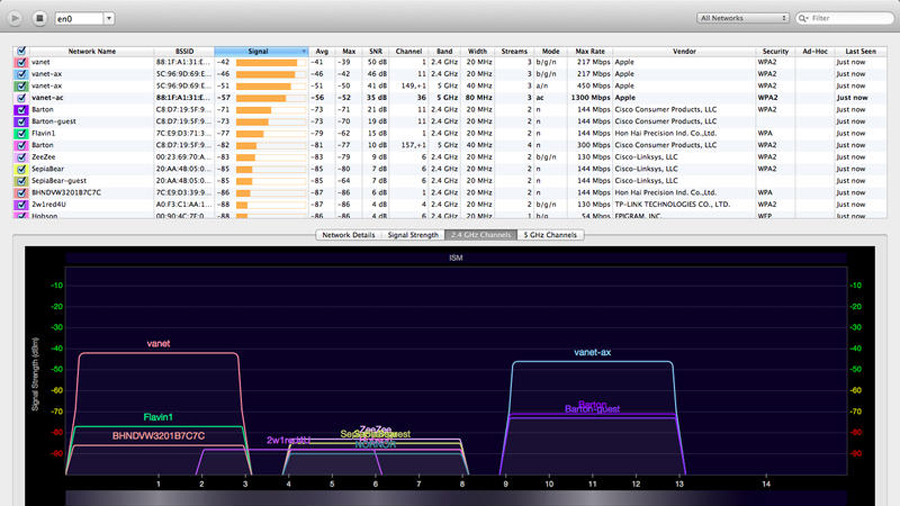Faster Wi-Fi: what's the secret?
In addition, there are no issues with signal strength falling off the further you move from the router, and noise is minimal (though in older properties with ancient wiring, you might have a problem).
Power up
Powerline adapters come in various shapes and sizes and are differentiated in two ways. The first is data throughput. Early powerline adapters were limited to data transfer rates measured in mere tens of megabits per second. Nowadays, most adaptors have throughputs of 200Mbits/ sec or 500Mbits/sec.
The second way in which powerline adapters differ is in their physical features. One of the biggest limitations of a powerline network is that it occupies one power outlet for every adapter. If you're short of sockets, that can be a problem. Some adapters now have passthrough sockets so that you don't lose the power outlet and can plug a lamp, TV or whatever into the powerline adapter.
Most adapters have one Ethernet port, but there are some on the market with up to four sockets, which might be useful if you have, say, a computer and printer close to one another; you can connect both to the same adapter.
Finally, most powerline adapters have the plug physically connected to the adapter. But some multi-port adapters take the form of a small box into which you connect a power lead. These are bulkier, but come with the advantage that they won't block a neighbouring plug socket in a power strip (though you shouldn't really plug a powerline adapter into a multi-point strip, since those multiple sockets can introduce noise and degrade the signal). Well-known brands of adapters include Belkin, D-Link, devolo and Netgear.
Choosing your router
It's worth not just sticking with whatever router your ISP supplied; here's why

This is the point in the feature at which we're supposed to take you step-by-step through all the things you should consider when buying a new wireless router. And we will, but before we do that, let's be clear: if you're a Mac user with an iPad, iPhone, or iPod touch and those are the only devices you're going to connect to a wireless router, there's really only one game in town: AirPort Extreme. OK, two games in town: if you want the extra features, consider a Time Capsule too.
Sign up for breaking news, reviews, opinion, top tech deals, and more.
The reasons are many. Firstly, when hooking up wireless devices, sticking to one vendor is generally a good idea (WDS implementation varies between vendors). And while we can't guarantee that the original manufacturer of the wireless chip inside the latest AirPort Extreme is the same as the one in your Mac or iOS device, we can be pretty damn sure that Apple has tested it exhaustively for compatibility with (at the very least) its current product line-up.
Secondly, AirPort Extreme supports the latest 802.11ac standard, meaning that, while you might not have any 802.11ac devices currently, it's future-proofed. 802.11ac has a theoretical maximum throughput of 1,300Mbps, and while you won't get anything like that - particularly if you're connecting g and n devices - its support for 80MHz wideband means that when you do eventually acquire ac devices, they'll have plenty of bandwidth.
AirPort Extreme also supports beamforming, the technology that ensures the wireless signal is strongest exactly where you need it. And it looks kinda pretty too.
If you can't stretch to an AirPort Extreme, consider AirPort Express. It's 802.11n compliant, and operates on both 5GHz and 2.4GHz. Plug its WAN port into a LAN port on your modem/ router, or connect it using powerline networking, and you can use it to surf the internet from places your modem/router won't reach, or to upgrade an 802.11g router to 802.11n.